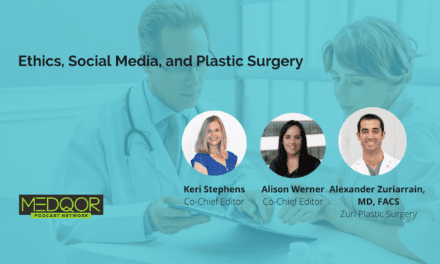Join Plastic Surgery Practice Co-Chief Editors Keri Stephens and Alison Werner as they talk to double board-certified facial plastic surgeon P. Daniel Ward, MD, MS, FACS, owner of Form Derm Spa in Salt Lake City, Utah, about what’s trending in facial plastic surgery, who today’s plastic surgery patient is, and what’s bringing patients to his practice.
Increased interest in facial plastic surgery
Ward talks about the increased interest in plastic surgery and aesthetic procedures, both surgical and nonsurgical. He credits the wellness trend and people’s desire to take care of themselves. Part of that is looking and feeling their best. And it’s not just the stereotypical vain, Beverly Hills types who are seeking these procedures. “It’s normal people who work 9-to-5 jobs…and just want to look and feel their best,” he says.
Another factor at play here, according to Ward, is the fact that nonsurgical techniques, like fillers and lasers, have made getting a little work done easier and more accessible. Recovery time is less disruptive and the cost is a fraction of a surgical procedure.
On the flip side, Ward talks about the fact that the increased use of fillers and other nonsurgical techniques has raised patient awareness that these procedures can only do so much—opening the door to surgical cosmetic procedures.
Ward also talks about how younger patients are increasingly seeking out facial cosmetic surgery. Before it was the 55-year-olds that didn’t like their jowls or neck. But now, he’s seeing a younger population, some younger than 40 who are looking to have their buckle fat removed, chin augmentation, or cheek implants. Or sometimes even a true facelift.
Preservation rhinoplasty
In addition, Ward talks about how his approach to rhinoplasty has changed. He talks about structural rhinoplasty and the concept of preservation rhinoplasty. As Ward puts it, preservation rhinoplasty allows him to maintain a more natural result with a shorter recovery.
Post-op help for patients
On the business front, Ward shares how he is currently exploring a post-op program for his patients that helps them better their lives. Ward is looking at pairing patients with an in-house life coach to help them work on some aspect of their lives post surgery—whether that’s finances, overall health, or relationships. The goal is to tie that rhinoplasty, a major life event for anyone, into an overall improvement in the patient’s life. As Ward put it, “That is the thing that really inspires me and gets me excited.” PSP





